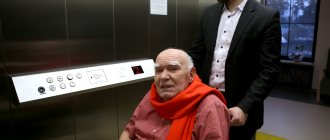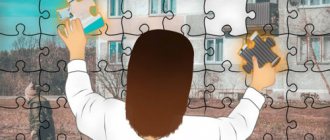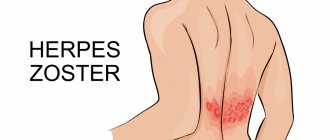Dementia is an insidious disease that develops against the background of brain atrophy and leads to a gradual change in the personality core. The disease, with the exception of rare cases, is incurable, but its development can be slowed down and its course alleviated if timely medical help is sought and treatment is prescribed correctly.
However, this is rarely possible - the reason lies in the paucity of the first symptoms, and in senile dementia they are similar to the natural processes of aging. The second important reason is the lack of knowledge that would allow one to identify the signs of the onset of dementia and consult a doctor in time for treatment.
Who is at risk for dementia
Experts recommend that those who are at risk or live with relatives belonging to it be required to study the symptoms and signs of dementia. Most often these are people:
- Over the age of 60-65 years;
- After a traumatic brain injury;
- With cardiovascular diseases (hypertension, heart attack, stroke);
- Obese;
- With endocrine pathology.
Also at risk are those who lead a sedentary lifestyle, avoid mental and physical stress, have bad habits or uncontrollably take psychotropic substances. Close relatives of those who suffered from this disease should pay attention to the possibility of developing dementia, since scientists have proven a hereditary factor.
Diagnostics
The first differences in behavior are noticed by parents in early childhood, but sometimes they appear later in adolescence if social demands increase and begin to exceed the child’s capabilities. The diagnosis is made by a psychotherapist after long-term observation of the child’s behavior and assessment of the following factors:
- social adaptation skills;
- speech development;
- the life story of a teenager.
To do this, the patient undergoes:
- examination and conversation with a psychiatrist;
- survey;
- neuropsychological tests;
- neurological examination;
- Brain MRI and EEG.
To establish a diagnosis, the following doctors are also involved: a psychologist, a child psychiatrist, a child neurologist, and a teacher-defectologist.
First signs of illness
Dementia can occur in different ways, depending on the cause of its occurrence, the location of the pathological process, and the stage of severity. The main signs of dementia appear already at the first stage, but in almost 90% of cases they go unnoticed by others. At the onset of the disease, the patient himself notices a number of changes, but does not attach due importance to them, considering them signs of fatigue, depression, or natural causes associated with the aging process. Subsequently, due to changes in mental activity and perception, the patient ceases to recognize and recognize his illness.
Regardless of the type of dementia, in general, the following symptoms and signs of dementia can be identified:
- Memory problems. They begin with ordinary forgetfulness, the inability to remember minor information: the name of a new acquaintance, the location of the keys, a recent conversation. Further, professional memory suffers, gradually the first symptoms and signs of senile dementia are aggravated by memory failures, while the person tries to reconstruct the course of events, remember what happened, filling in the gaps with fictitious stories and facts. This point distinguishes dementia from ordinary forgetfulness. In a severe stage of the disease, memory is completely lost, a person does not recognize relatives (children, parents), and sometimes - his own reflection in the mirror.
- Impaired thinking and concentration are also signs of incipient dementia. The patient's thoughts are disordered, it is difficult to concentrate on one thing, thinking is slow, clouded, the logic of judgment gradually disappears. In the later stages of the disease, a person thinks fragmentarily, false ideas arise (phobias, persecution mania, poisoning, etc.).
- Speech disorders. Just like thinking, the patient’s speech suffers: in the early stages it is characterized by many errors, and sometimes the logical chain of the story is lost due to forgetfulness. At a later stage, speech is incoherent, even to the point of producing meaningless sounds.
- Emotional disorders. They begin at the first stage and are characterized by frequent mood swings, tearfulness, moodiness, apathy, and asociality, which is why the disease is sometimes confused with depression. At later stages, panic, unreasonable anxiety, and aggression appear.
- Sleep disorders. This symptom is characterized by a gradual loss of biorhythms (daytime sleep, night wakefulness).
- Loss of sense of time and place. The patient forgets the day of the week, the year, cannot distinguish the time of day, and gets lost in a previously familiar area.
As already mentioned, signs of dementia in old people depend on the type of disease and the location of the pathological process. Thus, with dementia of the Alzheimer's type, memory suffers the most, false memories appear, speech disorders occur, and the ability to orientate in space is lost.
Vascular dementia, which accounts for 10-20% of all cases of the disease, occurs due to brain atrophy due to impaired blood supply. Signs of vascular dementia: a sharp decrease in mental activity, intelligence, fatigue, emotional disorders, impaired thinking and speech. Memory problems may not occur.
Also, the clinical manifestations of vascular dementia depend on the location of the lesion in the brain (hippocampus - impaired attention, memory; striatum - motor dysfunction; thalamus - meaningless speech).
Important! In 10% of cases, dementia is aggravated by various psychoses.
Differences between signs of dementia and other diseases
Dementia in old age is often mistaken for the processes of withering that occur in the body after 70-80 years. In this case, the combination of symptoms and their progression should alert relatives who observe suspicious symptoms.
The difference between dementia and natural decline of the body
| Defeats | Senile dementia | Natural processes |
| Memory | First of all, the loss of short-term memory, while events of the distant past are remembered in detail. Also important signs and manifestations of dementia are fantasies and fictions that replace new memories. Another difference is the loss of professional skills | Loss of up to 20% of short-term memory, combined with forgetting past events. At the same time, acquired skills are not lost. |
| Emotions | Unreasonable changes in character that progress | Depression, apathy, irritability, and tearfulness may occur. However, such manifestations are not constant and have reasons (loneliness, resentment, etc.) |
| Intelligence | Gradual decline. The main distinguishing symptom is the inability to perceive, remember new information, and acquire new skills. | Decrease, against the backdrop of maintaining previously acquired skills. But the readiness and ability to learn and remember new information remains |
Since dementia sometimes occurs in young people and children, the disease is mistakenly associated with mental retardation. To distinguish between these diagnoses, it is worth highlighting the main signs of mental retardation and dementia. The first disease is congenital and manifests itself at the age of 2-3 years. Children born with mental retardation lag behind their peers in mental and physical development. Dementia at this age most often occurs as a result of injuries, children are physically healthy, in addition to decreased mental activity, other characteristic symptoms appear, and the disease progresses.
The first signs of dementia in women
Women are much more likely to suffer from dementia than men. This is because about 50-60% of all cases of dementia are associated with Alzheimer's disease, which mainly affects women. In addition, the long life expectancy of female representatives also affects (the disease in most cases occurs after 60-70 years).
At the same time, the symptoms and first signs of senile dementia are easier to identify in women than in men. This is explained by the presence of a greater number of symptoms: patients are much more likely to experience emotional disorders, memory loss with the replacement of information with false memories.
The patient's mood can change very often and dramatically. The most typical manifestations are aggression, irritability, capriciousness, vulnerability, tearfulness, and greed. Closedness is noted, the woman stops communicating with friends and sometimes even relatives. There is no improvement in the emotional background; without treatment, the disease constantly progresses.
Signs of dementia in men
Most often, the first signs of dementia in men are disturbances in speech, thinking, and memory. Due to the localization of the lesion, nonspecific symptoms may develop: tremor, disturbances in purposeful movements. Emotional lability (frequent mood swings) is detected much less frequently than in women. Relatives may suspect the presence of the disease by an increasing decline in cognitive functions, and sometimes by unreasonable aggression or jealousy.
According to studies conducted in the USA, although the disease begins earlier in men (from 60 years of age), the first symptoms and signs of dementia appear later in men than in women. For this reason, the disease can rarely be detected at an early stage, and in some cases it remains undetected until the last stage.
Signs of the disease in young people
At a young age, dementia manifests itself in the same way as at an old age, but its prognosis is slightly more favorable. This is explained by the fact that young people more often seek help from specialists when the first signs of illness appear, as well as in connection with other causes of dementia. For example, in case of injuries, brain tumors, lack of vital vitamins and minerals, or hormonal imbalances, the progression of the disease can be completely stopped.
Symptoms and signs of dementia in young people are increasing forgetfulness, problems with thinking and speaking, concentrating, and the inability to focus and do normal work. All this leads to depression, loss of interest in life, withdrawal from society, and aggression.
Reference! Dementia in young people is registered relatively rarely; in different countries this figure reaches 1-10% of the total number of cases.
Signs of the disease in the second and third stages
In addition to the symptoms described above, in the second and third stages of the disease, household skills gradually disappear. A sick person cannot prepare food, forgets to close the refrigerator, and leaves the house leaving the door open. The skill and desire to take care of oneself is lost: washing, changing clothes.
In case of damage to the diencephalon and midbrain, hallucinations, confusion, and loss of the sense of time may appear.
Also, signs of the last stage of dementia may include various motor disorders: inability to maintain balance, tremors of the limbs, loss of praxis (the ability to perform purposeful motor acts). Three stages of dementia and the main distinguishing features
| First stage | Second stage | Third stage |
| Loss of professional skills | Loss of simple skills, inability to use most household appliances, neglect of personal hygiene | Loss of all skills, inability to repeat simple actions, sometimes even move and eat |
| Minor emotional changes (these signs of dementia are especially common in older women) | Emotional changes: apathy, depression | Complete destruction of the personal core |
| Forgetfulness is noted | Short-term memory suffers | Loss of memory, disorientation in space, time and even self-identity |
Such serious disorders as complete loss of personality, the inability to remember one’s own name, face, orient oneself in space and time, as well as the loss of the ability to independently take food and water can be interpreted as signs of death with dementia, which will soon occur.
Important! Starting from the moderate stage of dementia, the patient may refuse to eat or, conversely, eat more than necessary. This is due to the loss of short-term memory and the inability to correctly sense hunger or satiety.
Symptoms that a doctor can identify
If a patient exhibits signs that may indicate the development of dementia, it is very important not to delay contacting a specialist. The doctor will accurately determine the first symptoms of the disease, using, in addition to interviewing the patient and his relatives, a number of diagnostic tests in order to confirm or refute the disappointing diagnosis.
At the appointment, questions must be asked that help identify the initial signs of dementia in women or men:
- when the first manifestations were noticed;
- what signs were identified by relatives;
- how the patient navigates in space and time;
- is there a loss of short-term memories (three blocks of memory are tested, but the loss of short-term memory is of greatest importance);
- Are there any changes in speech and its perception?
A person can also take intelligence tests to test their ability to perform specified actions (praxis).
Tests that detect dementia
Experts often use a test to look for signs of dementia in women or men. There are several such tests:
- SAGE - a questionnaire that allows you to identify problems associated with memory and intelligence;
- Mini-cog – task of repeating words after a specialist;
- MMSE is a very effective test that allows the doctor to see the overall picture and identify any disturbances in perception, memory, thinking, and speech.
- The Montreal Cognitive Function Rating Scale is considered one of the newest and most accurate tests.
A clock test is also often used, where the patient needs to accurately depict the time value indicated by the doctor. This test is simple and accessible, but does not always show early signs of dementia in older people.
Laboratory methods
Using laboratory methods, not only the presence of the disease is checked, but also its stage and type of lesion. In a severe stage of the disease, the doctor may also notice signs of imminent death in dementia.
Among laboratory methods, the most accurate are brain examinations using CT and MRI. Sometimes the electroencephalography method is used, which shows the activity of different parts of the brain.
Important! If it is necessary to undergo an MRI, the patient or his relatives must notify the doctor about the presence of pacemakers and various implants.
Also, to identify the cause of dementia, a number of additional tests and laboratory tests may be required, for example, biochemical and general clinical blood tests. These tests are prescribed by the attending physician, after identifying the symptoms and signs of senile dementia, and treatment based on the results obtained is also prescribed by the doctor.
Treatment
Unfortunately, senile dementia cannot be cured. A specialist can only prescribe medications that will help alleviate the patient’s condition and slightly slow down the development of dementia.
The most commonly used medications are:
- Nootropic drugs (Cerebrolysin, Piracetam, Nootropil) help restore neural connections, stimulate the function of brain cell renewal, and restore normal blood circulation.
- Drugs for normalizing blood circulation in the brain, for example, Cinnarizine, can improve the general condition and eliminate the physiological manifestations of the disease.
- Medicines to strengthen the vascular wall (Ascorutin) are indicated for patients with a tendency to fragility of blood vessels.
- Sedatives of plant origin (Persen, Novo-passit) are indicated for sleep disturbances and severe nervousness.
- Antidepressants (Amitriptyline, Anafranil) are prescribed for severe depression, lack of desire to live, and suicide attempts.
If symptoms of other diseases appear, the doctor prescribes symptomatic treatment. Usually these are antiarrhythmic, antihypertensive, diuretics, gastroprotectors, choleretic medications, hepatoprotectors.









